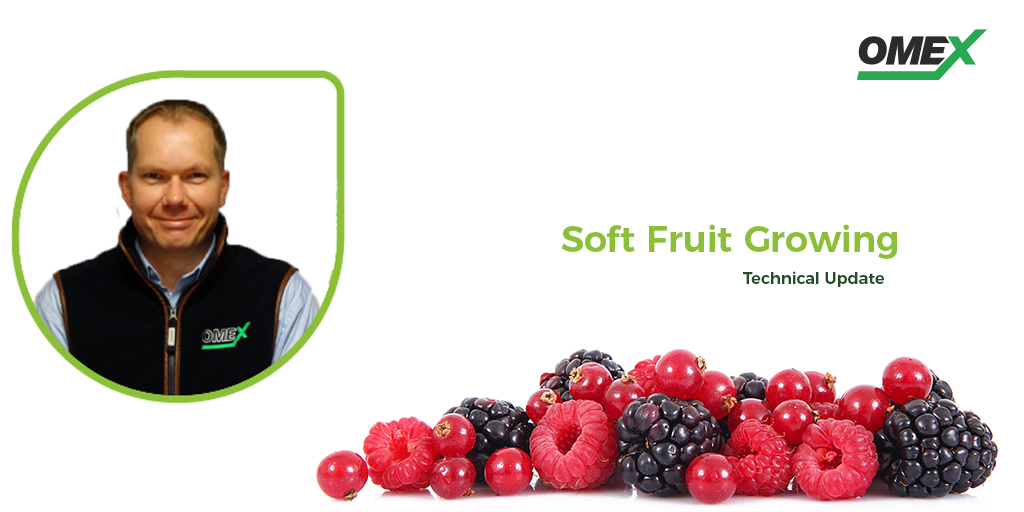
Soft Fruit Agronomist, Neil Holmes, gives a seasonal Spring update on soft fruit growth.

With the growing season progressing rapidly, fruit crops require nutritional support to ensure that continued growth and development is sustained. Early season application of soluble feed should have gone someway to replace the nutrients washed out of the growing media by rainwater over winter, but the correct balance of nutrients is essential to meet the demands of the developing crop and to help optimise yield.
After the spring equinox, many field fruit crops switch to a generative phase of growth and undergo an intensive period of flowering. All these crops will benefit from a change in the proportions of macro nutrients supplied via the fertigation. Further, targeted nutritional support from foliar feeds may be required during pollination to optimise pollen tube development and subsequent cell division.
OMEX supplies a range of fertigation products suitable for generative periods of growth in conventional crops grown in coir or peat and for soil grown organic crops. These feed mixes are rich in potassium which is involved in the activation of enzymes, energy transfer and crucially, carbon dioxide uptake. It is the regulation of carbon through the stomata and subsequent starch synthesis which can impact upon the sugar content of fruit.
The polyamines and phlorotannins present in Kelpak® (or Kelpomex in organic crops) promote pollen tube elongation. CalMax Ultra, contains Boron, Zinc and Calcium which can enhance fruit set by supporting various functions in the pollinated flower. Boron is required for pollen tube growth; zinc is an essential nutrient used in enzyme production and calcium supports cell division of the fertilised ovary.
Whilst a change in the seasons brings a move to a generative phase of growth, it also brings high humidity which promotes the development of fungal pathogens such as Botrytis. A range of crop sensors and software packages are available for monitoring the internal tunnel environment and use of these will indicate periods of high botrytis risk.
Combining sensing equipment with optimal nutrition will give plants the best chance of coping with attack from fungal pathogens. These are just two elements of a multi-pronged Integrated Crop Management (ICM) strategy.
Bioavailable silicon has been shown by Dr Avice Hall and colleagues at the University of Hertfordshire to be of benefit in thickening the cell walls of treated strawberry plants when compared to an untreated control. This modification of the leaf structure is believed to inhibit the development of fungal growth and attack by several pests including Two Spotted Spider Mite (Tetranychus urticae).
SW7 from OMEX contains silicon and when applied at higher application rates, moves in the xylem and forms a complex with calcium, strengthening cell walls and helping to alleviate abiotic and biotic stresses.
Zynergy is a combination of readily available copper and zinc which can support the healthy functioning of the plant’s own immune system as part of an ICM programme in conventionally grown crops. Greenside is the equivalent OF&G and Soil Association approved product, for use in organic production systems.
To discuss these products further and how they fit into your ICM strategy, talk to your local FACTS qualified OMEX advisor, here.
